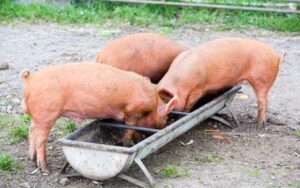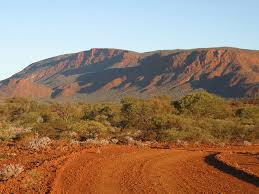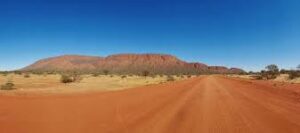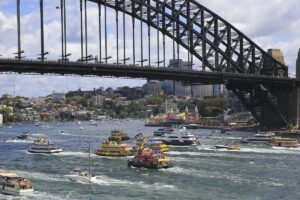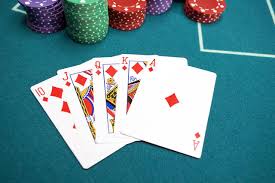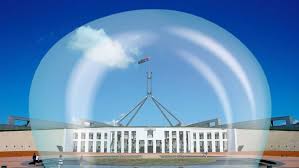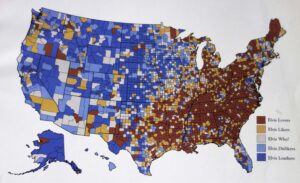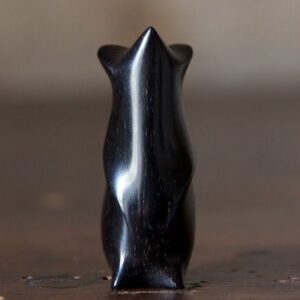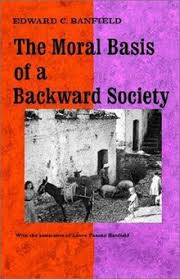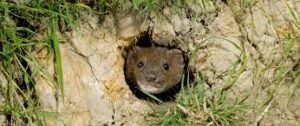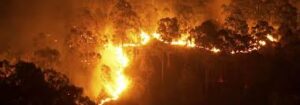
I wonder as NSW is being swept by bushfires how the person inured to arm waving, hallelujah clapping and glossolalia would respond to Revelation 8.7.
The first angel sounded, and there followed hail and fire mingled with blood, and they were cast upon the earth: and the third part of trees was burnt up, and all green grass was burnt up.
Of course it is not climate change; it’s the Bible, stupid.
I have always wondered whether this last book of the Bible was written by some guy on qat such is the imagery. I have never understood the fascination with this final book, as though Christianity needs to have fear as a motiving force for belief and intolerance.
However, these bushfires in Australia are no joke. We are not going to be consumed this year by the fires of Hell, but I do not want to live in an environment of smoke for half the year, where a hundred fires burn and where the population is worn down – and the important Samaritan element of a voluntary brigade of fire fighters become exhausted.
It provides a reason for the need to mobilise the population able to cope with the increased capriciousness of nature as the planet warms.
The Australian Defence Force bluntly states it is not trained to fight fires on the ground outside their installations. How long that dictum will hold is problematical.
However, that is not to underrate the current amount of assistance being provided by the Defence Forces, especially given the water bombing by fixed wing and helicopter has been such an important factor in limiting the spread.
However, eventually water runs out and fire retardants have unspecified long term toxic effects. In the end, the potential outcome just reframes the delusionary Revelation. No need for the angel; our Prime Minister will suffice in sounding the instrument – perhaps the whimper of a claypipe blowing bubbles. However there is still the one bubble of denial in which Morrison is encased. Not the best way I would have thought to fireproof the country, one way or another.
Bushfires in Australia
One of the images of Sydney I have always had is that of the frangipani. Normally, it is just too cold in Melbourne for frangipani to flower; it is the same in most parts of California. Frangipani is the flower of the tropics – Hawai’i being closely associated with it.
Sydney is thus typically sub-tropical. Therefore, it should have two seasons – hot but wet and humid in summer; dry in winter. The oppressive humidity and summer rain is the normal antidote for bushfires from the Illawarra northwards along the coast.

To me the frangipani is the totem of this climate; they may grow in Melbourne but not flower normally. The winter cold and frosts kill them.
Melbourne has a Mediterranean climate – very hot and dry in summer with a beautiful autumn, cold wet winters and a blustery spring. February has traditionally been the time of the catastrophic bushfires. Ever since Melbourne almost burned in the February bushfire of 1851, late summer is the perfect time for major bushfires not only in Victoria but also in Tasmania and South Australia.
I remember driving down the Hume Highway to Melbourne in February 2009 the day before the most deadly of all bushfires swept across the highway on its way to the incineration of nearly 200 people. When the wind comes from the north and the air is so dry then you know Victoria will burn at the slightest ember from a discarded cigarette or spark from an overloaded power line.
Yet as a child I can remember there being a huge bonfire to celebrate Guy Fawkes Day piled up in front of our house. It was November 5. Catherine wheels attached to letterbox, jumping jacks and tom thumbs exploding across the grass verge, rockets disappearing into the night sky. Fireworks everywhere. Fire everywhere.
Two months later there was always a fire along Gardiner Creek in the rye grass, and one year I remember it scorching the fences alongside the reserve. It was all very exciting to have the fire brigade coming with the bells ringing. Memories from one’s childhood stick and may become enlarged. However, it does take a shift in climate to make a bonfire in November very unwise.
The question thus which needs to be answered – is the shift in the fires in line with a change in the climate pattern?
I read today that: “Bush fires raged on the outskirts of Sydney today as the heat wave continued. Metropolitan fire brigades received 40 calls before noon. The temperature rose to 98 degrees by midday – at 9 am it was 93 degrees, a record early morning mark for November. There are few towns that are not menaced on the Blue Mountains and grave anxiety exists throughout the tourist areas. Fires are also burning at Linden, Blaxland and Hazelbrook as well as at Springwood, Glenbrook, Leura and Katoomba. Shortly after noon a huge wall of flame advanced on Glenbrook…
The newspaper report was 6 November 1936. The Blue Mountains is the touchpaper for bushfires in New South wales.
Frangipani do not grow well in the Blue Mountains – the climate is too much like Victoria. Too dry; too cold in winter.
But I note the frangipani in the backyard this year is losing its flowers prematurely. Maybe when the frangipani stops blooming, the fires may come to the coast.
However, while the frangipani may be an intuitive bellwether, even more germane is the fact that: “1951-1952 could possibly be one of the worst on record for eastern Australia when more than 8 million ha were burnt.” This is a reliable quote from a CSIRO 1976 appraisal. This reported: “The season began in late October 1951 with a series of lightning fires in southern central Queensland around Charleville. About 2.8 million ha were burnt in these fires. These were followed by very large fires in northern N.S.W. in November and in late January and early February many fires were reported in southern N.S.W. and Victoria.”
The similarity is there with 2019, but hopefully the possible further outcome will be avoided.
The one obvious conclusion is that bushfires are part of the Australian character. The population has become used to them – but not every year as may be predicted by a continent running out of water and ill-prepared in people and machines for this to occur on an increasingly regular, perhaps annual basis.
Are we expected to cope with catastrophic bushfires every year, until there is nothing left except a charred remnant of what was a beautiful unique land we all have been given a variable amount of time to enjoy?
However, training the defence force to defend the nation against fire would be a good start, joining the career fire fighters in helping to alleviate a stressed volunteer fire fighting force. I would think it more useful for our army to do that rather than killing pushtuns in far off Hindu Kush.
Getting more aircraft able to bomb the fires seems a good idea, especially if we have a yearly bushfire season , but where do we get the water?
I would hope that if fire retardant is increasingly used, its toxicity, both short and long term, is tested and continued to be monitored.
Hazard reduction? Now what does that mean? I remember well when a hazard reduction exercise resulted in a shed containing many of our belongings was burnt down, due to the “Department of Sparks and Wildfire” as it was called through gritted teeth.
What is a community centre to provide a haven against fire – a nuclear fall-out shelter; underground refuges akin to those along “Tornado Alley” in the mid-western states of the United States; fireproof concrete bunkers; a clean room facility where children, the aged, the susceptible can seek shelter on days when the smoke is so heavy?
Then there are the questions of what we do with people who want to commune with nature, with or without growing a bit of “weed” living in uninsured wattle and daub houses surrounded by bellbird and bush. No phone reception. Romantic until it burns.
I love living surrounded by bush, but I have spent money to clear the bush around the house and create a firebreak with a wide drive separating the house from the tea tree. The local “firies” had prior to this work, designated it as a “red flag” house – in other words don’t bother trying to save it if there is a bushfire. And this house is on the West Coast of Tasmania, parts of which have not burnt for at least 500 years and where the annual rainfall exceeds 100 cms. However, temperate rain forest is now vulnerable.
As I have said many times before, Australia is a land that demands respect; ignore that dictum at your peril. After all, it is all about frequency – bush fire season piled upon bush fire season without remission.
I do not know what the solution is but in any event this Government with the Book of Revelation under its arm is not prepared to listen; and may I say that does not help.
Barton is the Name; I did quite make the Game
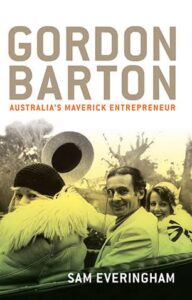
Gordon Barton is a name that would hardly resonate with anybody these days. However in his time in the 1960s and 1970s he cut a dashing figure as he strode across the business landscape. A libertarian, he parleyed transporting onions across State border into IPEC, then the largest express transport company with over a thousand trucks.
Very early on he had taken an anti-Vietnam War stance and a group formed around him, initially designated the Liberal Reform Group which eventually became the Australia Party. He was the epitome of the new force on the conservative side of the political spectrum, prepared to tackle the Whig element embedded in the Liberal party.
His party picked up almost 3 per cent of the national vote in 1972 which, when cast against the rise of Steele Hall in South Australia and Rupert Hamer in Victoria, suggested that the reform of the Party was high on the agenda of a cadre of Party members and Business.
After the Coalition debacle as portrayed in the media and self-appointed opinion leaders (the days before influencers), Barton further promoted the Australia party, which would occupy the centre of the political spectrum. He dabbled in setting up newspapers which represented his free-flowing views.
He believed that there was a place for a political force to occupy what he saw a defeated coalition team, which had seen debilitating stoush between Gorton (Victoria) and McMahon (NSW), with McMahon being the Prime Minister who lost the Coalition Government to Labor under Whitlam after 23 years.
There was however another force emerging, who did not just dabble in the media, he immersed himself in it. This was Rupert Murdoch. He supported Whitlam in the 1972 election, where he obviously developed a taste for power broking.
Billl Snedden (Victoria) then won the ballot for leader of the Opposition from Nigel Bowen (NSW) by one vote. Bowen had enough then having been in Parliament for less than a decade and soon departed to the judiciary.
Snedden had grown up in Western Australia, but after a stint in Europe he had settled in Melbourne and won the seat of Bruce, which he was to hold until he retired in 1983. The Victorian Branch of the Liberal party still had a significant cohort of people who thought the unquestioning fawning over royalty, domestication of females as a definition of animal husbandry and retention of capital punishment were viable policies. Snedden determined that he should take the party out of the aspic of the previous years in government.
Yet Snedden had never been seen as progressive. He had gone along with the Party line and at the time of the election defeat had been Treasurer. Nevertheless, despite the narrowness of his victory as Leader and the misgivings of some of the party, he was approached by a well-credentialled group from the business sector to set up a “think-tank”. It was early days in 1973, when much of these discussions were occurring that Gordon Barton in his role of maverick reformer came from the sidelines to chat with Snedden. Whitlam had taken a certain amount of energy from the Australia party with his withdrawal of Australian forces from Vietnam.
Barton not only owned trucks but he diversified into other areas including Angus & Robertson through his company, Tjuringa Securities, but his Australia party, fizzled, changed into other centrist groups trying to to accommodate the “wets”.
As David Owen, the British politician, who himself broke his links with the Labour party to become a founding member of the SDP in the UK, once said to me: “Beware the soggy centre of politics” by which I took it to mean that it was the dedicated authoritarians, whether of the left or right, who would drown you. In retrospect, “wet” was an only too true a name for the group.
Recently Owen was quoted as saying: “There was never any question that the SDP was going to be a left-of-centre party. The project, bluntly, was to replace the Labour party; to be a centre-left party shorn once and for all of the hard left.” So he has not shifted his suspicion of the centre but he still recognises that there should be a place for a political force away from the extremes.
Barton in the end became bored with Australia and decamped to the Netherlands to expand his business worldwide, which failed and he slowly faded away until he died in Marbella Spain in 2005.
For a while under Snedden the Liberal party toyed with a progressive agenda, but inter alia his failure to win the 1974 election snuffed that out.
Murdoch meanwhile has never got bored with the fragrance of power and the political chessboard.
A commentator in one of the Australian newspapers recently bemoaned the rise of Trump and Johnson, and the ingredient in their success has been Murdoch. From a young guy, who was both radical and republican, Murdoch had become the genius of the authoritarian right, where now lurk many who would have been equally at home as they would have been under Franco or Mussolini.
However, the particular Murdoch genius is to define an enemy. It may be a mythical enemy, but one nonetheless which had its seed in his treatment as a boy at Geelong Grammar School, as a young man tolerated by the English upper-classes as “Red Rupert” at Oxford, a man embittered by the treatment of his father by “the enemy.”
The Murdoch legacy is that those who believe the political process is about policy are hopelessly wrong. The political process is about coercion and power.
The commentator forgot Canada where the Murdoch infectivity is low. How the survival of Trudeau plays out may be a blueprint for how any political force handles an uncaring authoritarian elite. The current crop of independents in the Australian Parliament may represent a potential core, but it becomes too easy to become comfortable and acquiescent.
Australia is not Canada, but the two countries have the same sort of parliamentary system and the same question applies: why is anyone in parliament?
The political picture in Australia may be depicted as a division between Capital and Democracy and Labour and Socialism accentuated by the adversarial way the parliament had been arranged according to the rules, which govern the British parliament at Westminister. Nevertheless, there were certain traits which cross traditional party lines, in particular xenophobia expressed through the “White Australia Policy” and the “Tall Poppy Syndrome” where individual excellence is consumed by the destructive collectivism which is called “mateship”.
So the whole system is set up for brawling, now that the oratory powers of the politicians, so important for debate, have waned from what they once were – and now also parliament is about deals, increasingly hidden from public view.
Therefore, there have been periods when the time is right to set up a political force in the centre. Australia is restive, but what about the group of independents in the Parliament. Has the system of coercion, subtle often as it may be, sucked them in? Are they the genesis of this third force? We shall be looking at them individually as to whether they see themselves as a potential coherent force, or just another group of dealmakers absorbed into the Canberra culture.
Trudeau has been instructive, whether deliberately or not, but he has the conservative forces well defined on his right; and on his left a motley group of Greens, New Democrats and may I suggest Quebecois. Why the left? This group is not going to vote for the Conservatives but do provide the illusion that the Liberal party is what it says it is – and in the slightly moist soggy centre.
Combine that structure with a Bartonesque figure with the pugnacity of Rupert and we may have a goer.
Ça donne à réfléchir peut-être.
Mouse Whisper
All is not lost, Jeremy, you won the Cambridge seat and the people have obviously heard about Boris in Oxford. You won one of the seats and the LibDems the other.
And the LibDems losing their leader got a bath – quite literally as well as retaining the seat of Bath.
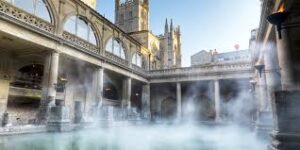


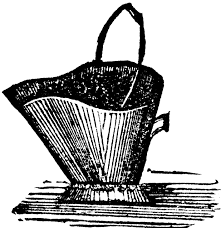
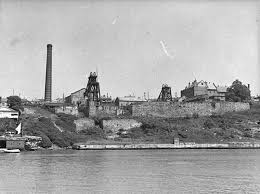

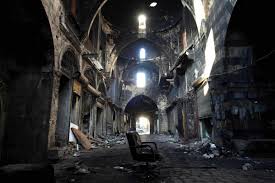
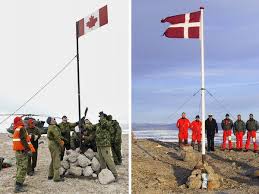

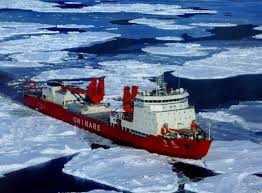
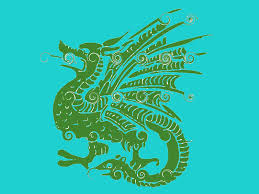 The Chinese I’m sure will be watching. They are always in for the long haul. The “China Watch” provides a useful insight into the thinking, even if we Australian readers may think it a bit of Sino-“puff”, remember “puff” is followed by the dragon – the magic dragon.
The Chinese I’m sure will be watching. They are always in for the long haul. The “China Watch” provides a useful insight into the thinking, even if we Australian readers may think it a bit of Sino-“puff”, remember “puff” is followed by the dragon – the magic dragon.
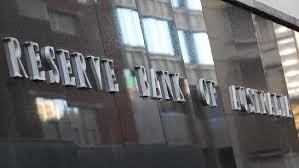

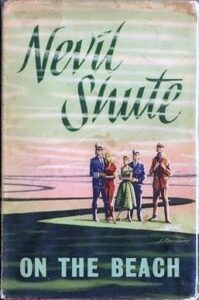
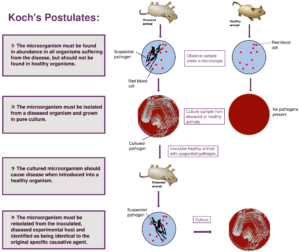

 I have one advantage. I have my marbles and I can look back over the past 20 years during which Treasury has put out a number of papers on this matter of ageing and the workforce – for what effect?
I have one advantage. I have my marbles and I can look back over the past 20 years during which Treasury has put out a number of papers on this matter of ageing and the workforce – for what effect?

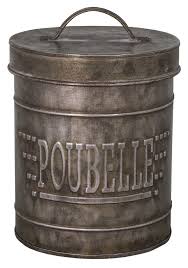

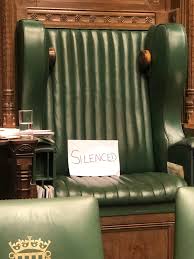

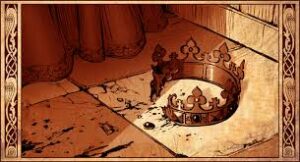


 However, as Dr Abraham had said, having repeated head on collisions at about 50 kilometre per hour cannot be good for the brain irrespective of whether you have a helmet or not (galea as the Romans would call it). Being medical practitioners, he and I are acutely aware of changes in our mental ability; that is until we have lost the ability to be aware.
However, as Dr Abraham had said, having repeated head on collisions at about 50 kilometre per hour cannot be good for the brain irrespective of whether you have a helmet or not (galea as the Romans would call it). Being medical practitioners, he and I are acutely aware of changes in our mental ability; that is until we have lost the ability to be aware.
